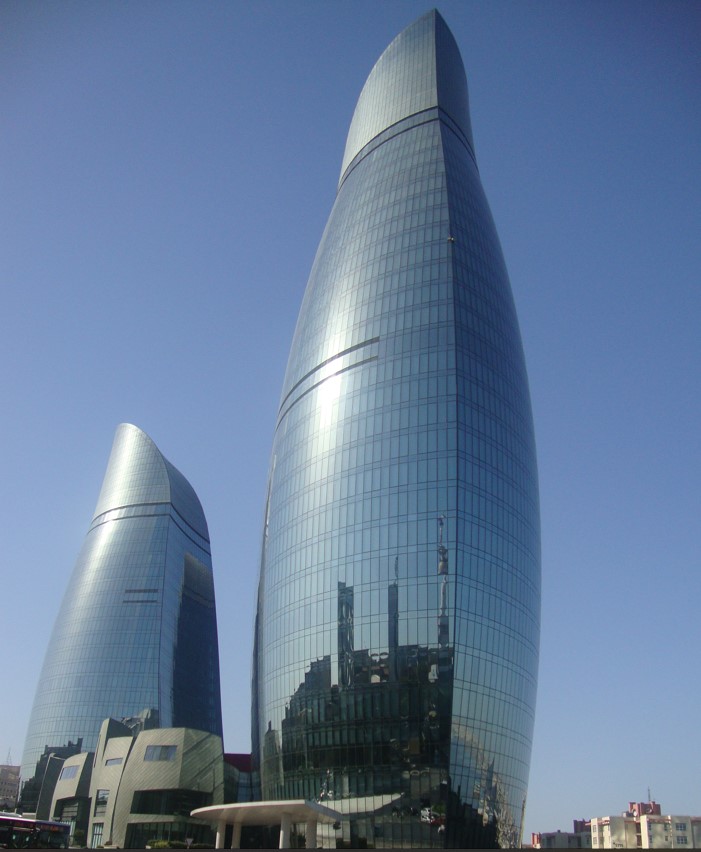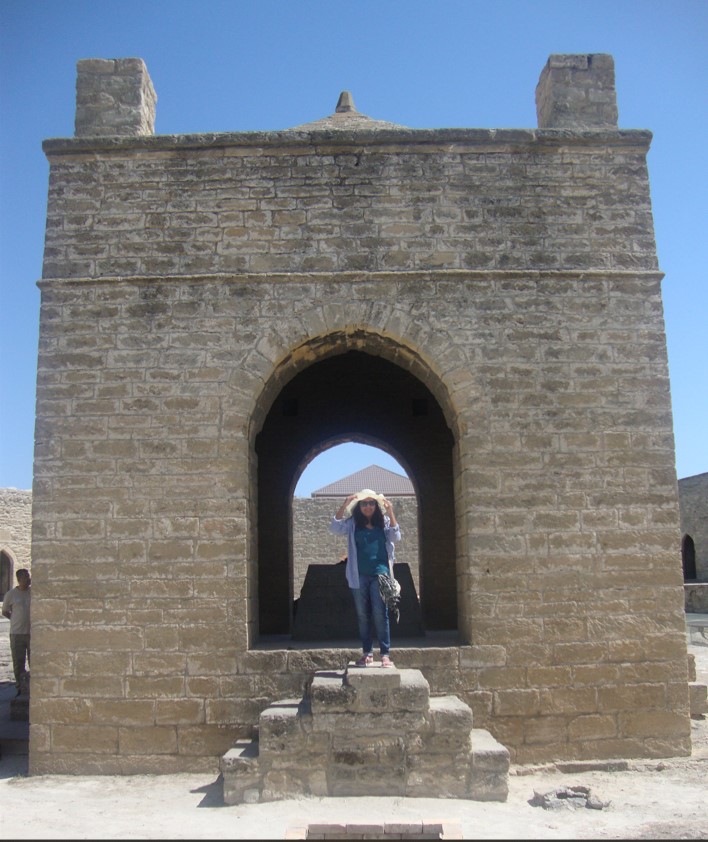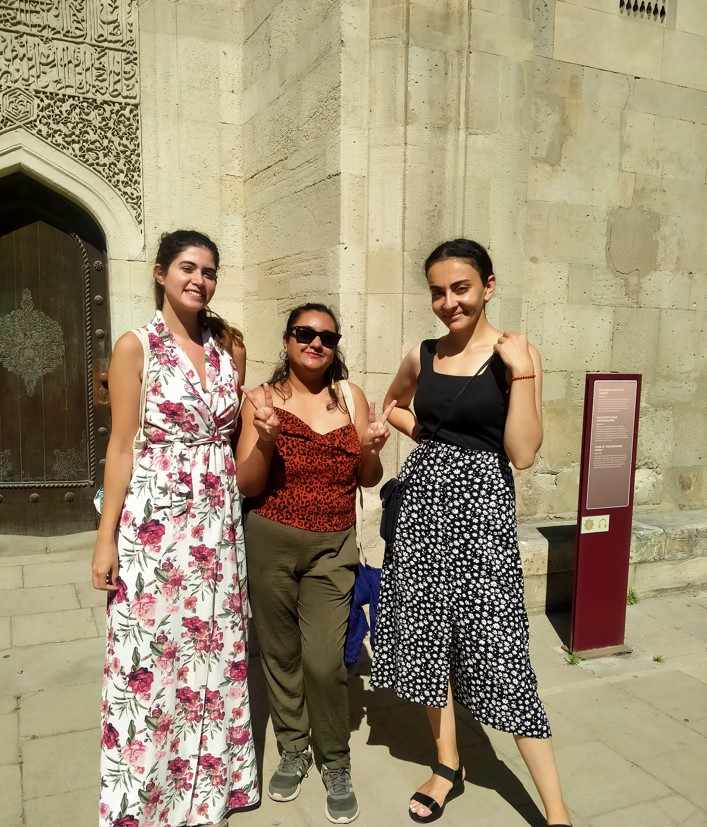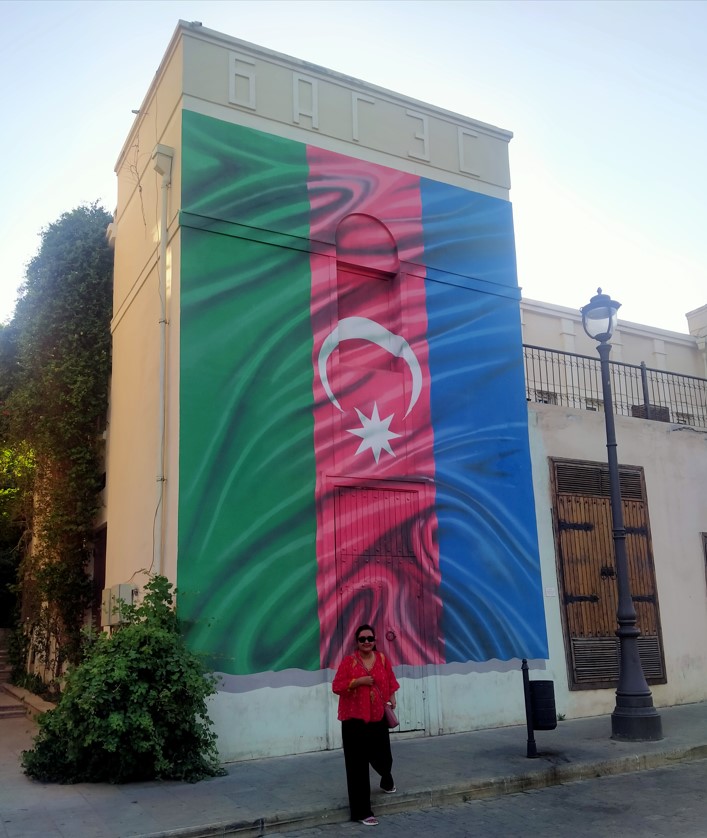By Nivi Shrivastava
The beautiful nation of Azerbaijan is an exceptional destination for many reasons; famous for its transcontinental location between the Asian and European continents, exotic geography, and confluences of cultures make it a versatile nation for travellers. Located by the coastline of the Caspian Sea, Azerbaijan shares its borders with Armenia, Iran, Georgia, and Russia, and draws a mix of influences from its neighbours. Thanks to the comfy Jazeera Airways, it took us a smooth flight from Delhi to Baku via Kuwait in premium class and we were in the gorgeous capital in a short time.

Mélange of East and West:
The capital city of Baku is a fine example of the Azerbaijani heritage and warm traditions that are unique to the nation. While the city’s skyline is dotted with modern skyscrapers like the panoramic Highland Park, Heydar Aliyev Centre, and the Carpet Museum, in the heart of the city lays the ancient cobbled streets leading to old-world palaces, museums, and bustling street markets. At Nizami Street in downtown Baku, soak in the vibe of live music, fresh street food as you walk past the landmark buildings on this largest pedestrian shopping pathway.
Make a quick stop at the National Museum of Azerbaijan literature named after Nizami Ganjavi at the entry of Icherisheher, a cluster of over 100 historical monuments in the gated old-city complex. On your way to the famous Shirvanshahs’ Palace in the old city, stop by the streetside cafes to enjoy a cup of famous Azeri black tea served with sugary Samani halva. As you explore the eclectic nightlife of Baku, let the whiff of freshly prepared Doner Kebabs, dolmas (stuffed vegetables), plov (Azeri pulao), and piti (a hearty meat soup) guide you to some of the best eating spots in town. (For more info on Azeri food, click here)

Home of fire:
Due to its rich sources of oil and subterranean gases, Azerbaijan is popularly known as the land of fire and has multiple references to the same in its historical, political, and cultural context. The biggest tourist attraction in Baku is the Flame Towers, built in the shape of flames, and post-sunset it lights up in shades of fire that can be seen from afar. Another significant holy site denoting the fire concept is the Ateshgah aka the Fire Temple of Baku, built like a castle in Surakhany town during the 17th-18th centuries by fire-worshipping Zoroastrians. Pronounced as “Atesh-gahor” meaning the ‘home of fire’ was built atop a now-exhausted natural gas field, which kept the eternal flame burning and became a point of pilgrimage for fire-worshipping Hindus until the end of the 19th century. Ahead of the fire temple, in the Absheron District, is the famous Yanardag aka the Burning Mountain, where natural flames from earth jet into the air as far as three metres emerging from a porous sandstone hill. The steady seep of gas from the subsurface keeps the fire burning throughout and one can smell the gas in the atmosphere.

A noteworthy stop on your itinerary could be the mud volcanoes of Gobustan, bubbling with grey lava-rich soil, which the locals believe is beneficial for human skin. You’ll find these in the middle of nowhere in abandoned lands, and jumping into them without a proper guide can prove to be fatal. The extensive Gobustan rock art cultural landscape lies in a protected semi-desert area and is a treat for history lovers. It is home to over 6,000 rock engravings depicting 40,000 years of rock art in prehistoric inhabited caves, settlements, and burials from the Upper Paleolithic to the Middle Ages.
Rich culture and warm people:
Contrary to the popular notion, Azerbaijan is not an Islamic country but a secular nation and Indian tourists will find a lot to explore here in terms of food and culture. “India is a very important source market for us. We are confident that with the re-launch of direct flights between our capitals, Baku and New Delhi, Indian travellers will be able to enjoy the best of what Azerbaijan can offer from relaxing in nature to visiting architectural landmarks at the heart of the capital city Baku”, mentions Bahruz Asgarov, Deputy CEO of Azerbaijan Tourism Board.

If you have an extra day in Baku, head to the historic city of Sheki and visit the Khan Palace, famous for its red brick and cobblestone architecture embellished with a lattice frame with a set of colourful traditional mosaic (shabaka) and tinted glass work. On the way back, stop at the remote Lahij village on the slopes of Caucasus and explore the antique cobbled streets, stone houses, souvenir shops, and almost 40 kinds of crafts practiced here.
(Trip and experience courtesy: Jazeera Airways and Azerbaijan Tourism)
